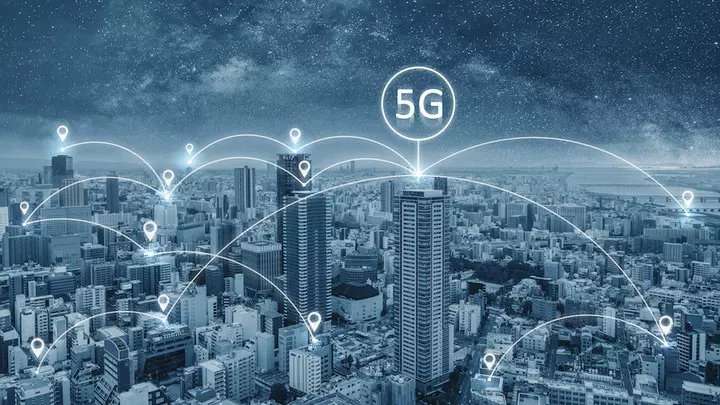If you’ve noticed ads or news talking about 5G, you might be wondering: “Is this just another tech buzzword, or does it actually matter to me?” The short answer: it matters more than you might think—but not in the way most people assume. Let’s break down 5G in simple terms, explain how it works, and explore what it really means for your everyday life.
What Is 5G?
5G stands for “fifth generation” of mobile networks. In other words, it’s the latest evolution of the technology that lets your phone connect to the internet, make calls, send messages, and stream videos.
Here’s a quick history:
- 1G (1980s): Basic analog calls.
- 2G (1990s): Digital calls and SMS text messages.
- 3G (2000s): Internet browsing and basic apps.
- 4G/LTE (2010s): Fast internet, video streaming, mobile apps, and online gaming.
- 5G (2020s): Super-fast, low-latency connectivity capable of powering smart cities, autonomous cars, and advanced applications.
Put simply, 5G is faster, smarter, and more capable than previous mobile networks.
How 5G Works
At a basic level, 5G works like earlier networks but with three major improvements:
- Higher Speeds:
5G can be up to 100 times faster than 4G. This means downloading a full movie in seconds instead of minutes. - Lower Latency:
Latency is the time it takes for data to travel from your device to the server and back. 5G drastically reduces this delay—perfect for online gaming, video calls, and even remote surgeries in the future. - Greater Capacity:
5G can connect many more devices simultaneously. Imagine crowded stadiums or smart cities where millions of devices need to communicate at the same time—5G can handle it without slowing down.
Where You’ll Notice 5G
Even though the technology sounds futuristic, there are everyday ways 5G can impact you:
- Faster Downloads and Streaming: Movies, apps, and updates download almost instantly. Streaming video in 4K or 8K becomes smoother.
- Better Video Calls: Lag and buffering disappear, making calls feel almost face-to-face.
- Smart Home Devices: Your smart thermostat, security camera, and appliances communicate faster and more reliably.
- Augmented and Virtual Reality: AR games and VR experiences become more immersive with low-latency connections.
- IoT (Internet of Things): From connected cars to wearable health devices, 5G supports a massive network of smart devices working together.
Should You Care About 5G Right Now?
For most people, the answer depends on your usage and location:
- If You Stream Videos and Play Online Games:
You’ll notice faster, smoother experiences, especially if you stream high-quality videos or play games that rely on real-time responses. - If You Live in a City:
Urban areas often get 5G first, so your phone might connect to 5G networks and enjoy the benefits sooner. - If You Travel or Live in Rural Areas:
5G coverage is still expanding. In many rural areas, 4G is still the norm, so the difference may not be noticeable yet. - If You Own Older Devices:
Only phones that support 5G can take advantage of the network. If your phone is a few years old, you might not see any benefit.
Bottom line: 5G is exciting, but it’s not yet a must-have for everyone. Think of it as a performance boost for the future, rather than a necessity today.
Common Myths About 5G
Myth 1: 5G Causes Health Problems
There is no credible evidence that 5G radiation harms humans. The signals are non-ionizing and similar to 4G, Wi-Fi, and radio waves.
Myth 2: 5G Will Replace Wi-Fi
5G is not a replacement for Wi-Fi. It complements it, especially in areas without Wi-Fi access. Wi-Fi is still common in homes and offices.
Myth 3: 5G Will Make Your Old Phone Faster
5G requires compatible hardware. If your phone doesn’t support 5G, you won’t see any benefits.
Tips for Making the Most of 5G
- Check If Your Phone Supports 5G: Only newer phones can connect to 5G networks.
- Know Your Carrier’s Coverage: 5G availability varies by city, country, and even neighborhood.
- Use It for Data-Heavy Tasks: Streaming, video calls, or cloud storage backups are where 5G shines.
- Don’t Worry About Battery Drain: 5G can use more power, so keep an eye on battery life if you switch frequently between 4G and 5G.
The Future of 5G
5G isn’t just about faster internet on your phone. It’s the backbone of smart cities, autonomous cars, telemedicine, remote work, and the Internet of Things (IoT). Eventually, your fridge might communicate with your grocery app, your car might update its software automatically, and hospitals could perform surgeries remotely with ultra-low latency connections.
While these futuristic applications are still rolling out, the technology is already improving everyday experiences like video calls, online gaming, and streaming.
Conclusion
5G is more than just a buzzword—it’s the next step in mobile connectivity. For most people today, it offers faster downloads, smoother streaming, and better connectivity in crowded areas. It also lays the groundwork for a future filled with smart devices and connected technologies.
However, for many, 5G isn’t an urgent upgrade yet. If your phone is working fine with 4G, and your usage is standard—calls, browsing, streaming—you can enjoy 5G when it becomes more widely available without rushing to buy a new device.
In short, 5G is exciting, beneficial, and future-ready—but not something you need to stress over right now. It’s here to make life faster, smarter, and more connected, one device at a time.
